The heart attack recovery is going nicely and walking sure helps a lot. Sue was so wonderful about walking with me and helping by saying "Do not drag your feet" and "We are not ina race!".
Walking May 9th 2016 (Top)
We are back in the neighborhood walking the walk! Today we did and hour and got many interesting pictures.


We chugged along for an hour
and the weather was just right..

Look carefully on the toad stools
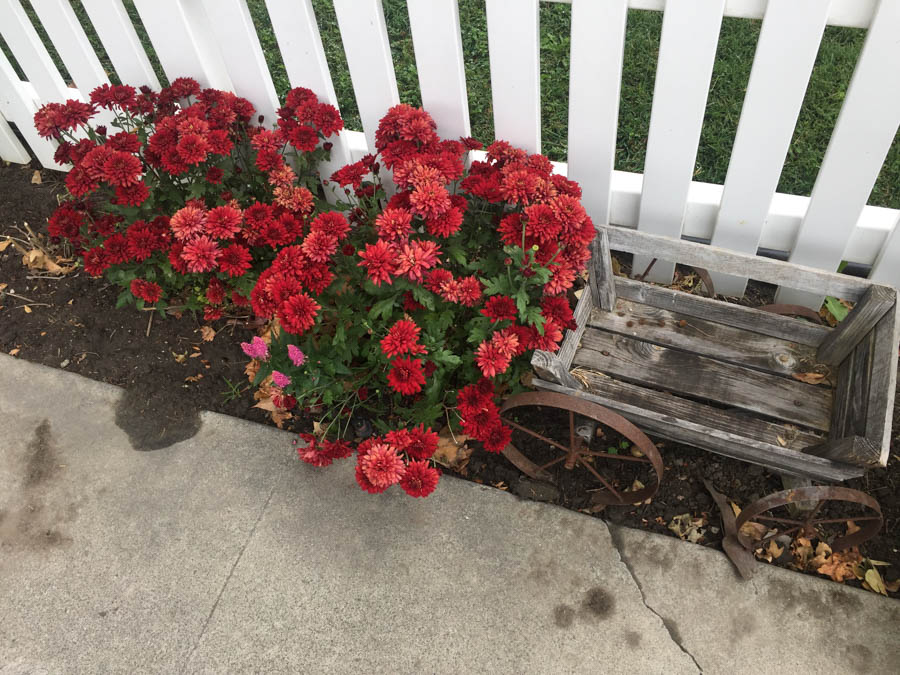
Love the decorations
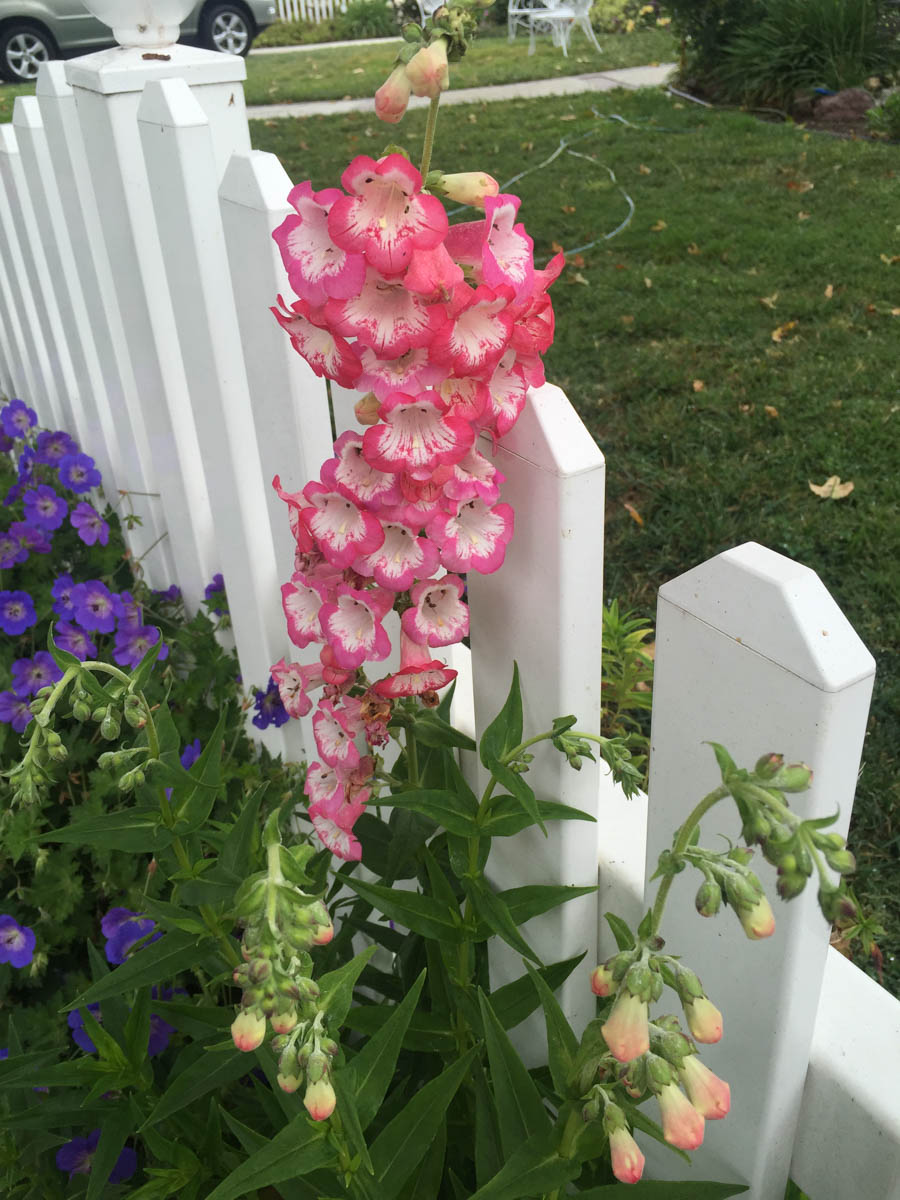
You can almost hear the bells ring!

Looks a little froggie out this morning

A white Zantedeschia aethiopica greets us
Did You Know? - Zantedeschia aethiopica (known as calla lily and arum lily) is a species in the family Araceae, native to southern Africa in Lesotho, South Africa, and Swaziland

Just around the corner from us is a home with flowers in the front yard... No grass just an outstanding garden! We sttod there amazed and snapped the following pictures!
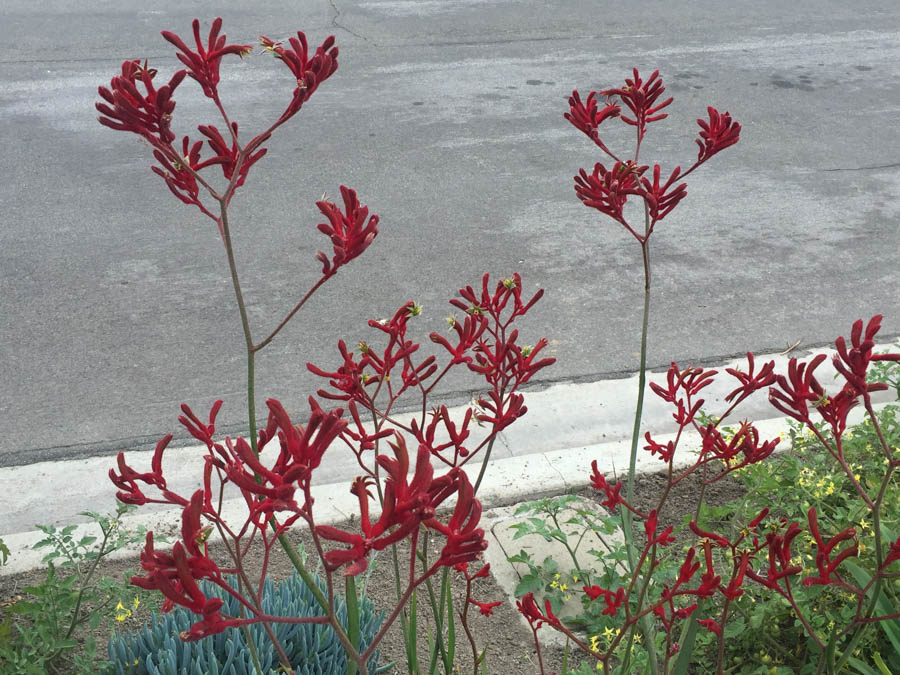
These are called "Kangaroo Paw"
Did You Know? - Kangaroo paw is the common name for a number of species, in two genera of the family Haemodoraceae, that are endemic to the south-west of Western Australia. These perennial plants are noted for their unique bird attracting flowers. The tubular flowers are coated with dense hairs and open at the apex with six claw-like structures: from this paw formation the common name "kangaroo paw" is derived.
The plant was named after the shape of the flowers, which resemble to the paws of a kangaroo. The kangaroo plant has been introduced into Japan and has been grown as a new ornamental crop mainly in Okinawa Island under a subtropical climate.
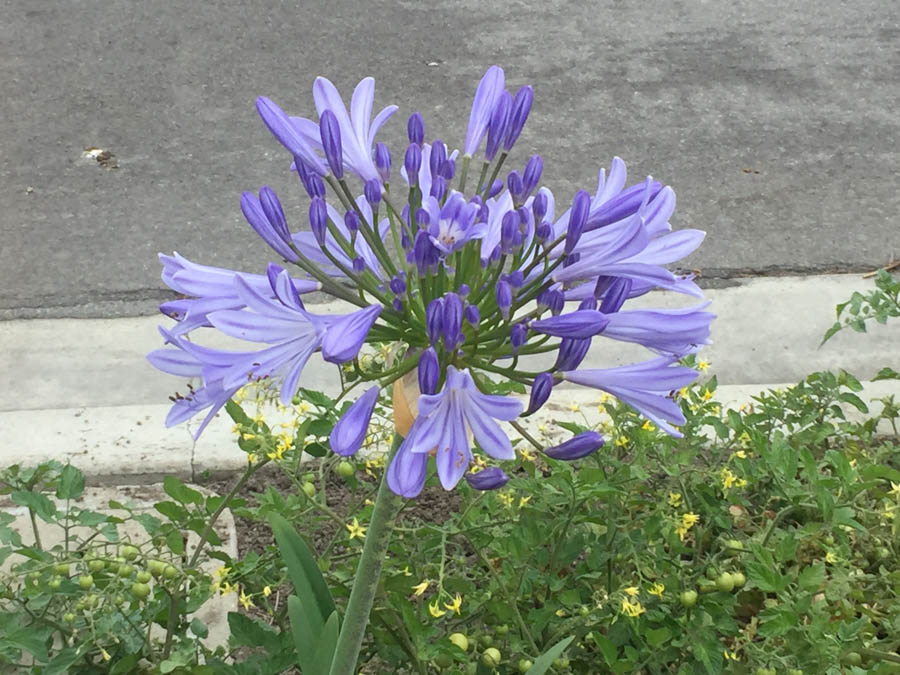
Blues and purples of the "Love Flower" or Agapanthus
Did You Know? - The name is derived from scientific Greek: αγάπη (agape) = love, άνθος (anthos) = flower.
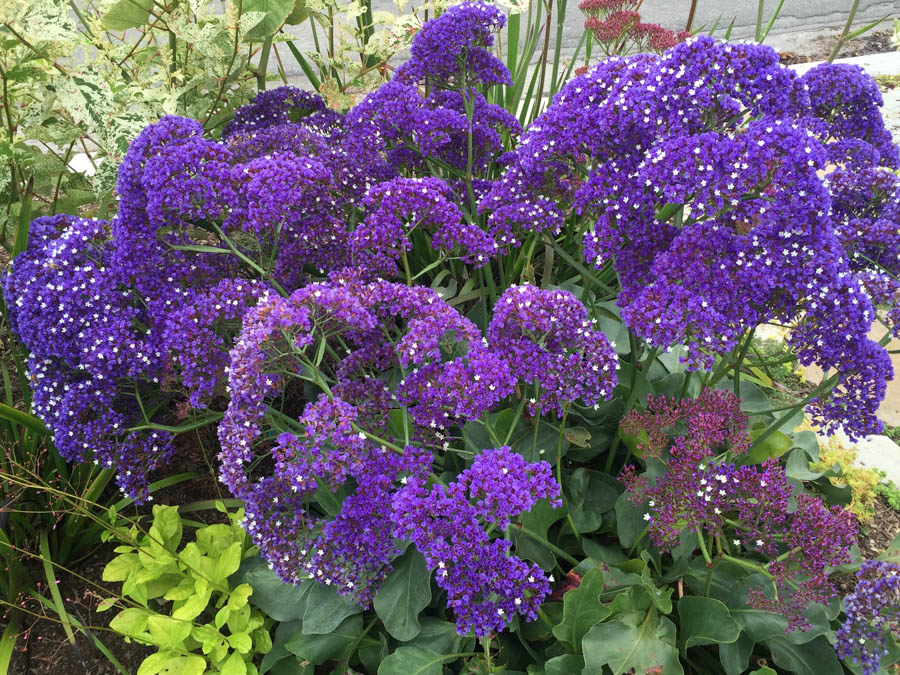
Looks like the sky at night

Mother Nature is quote amazing

The flowers seem to be smiling at us

We can hear them say "Hey... Dummy... Look at me!"
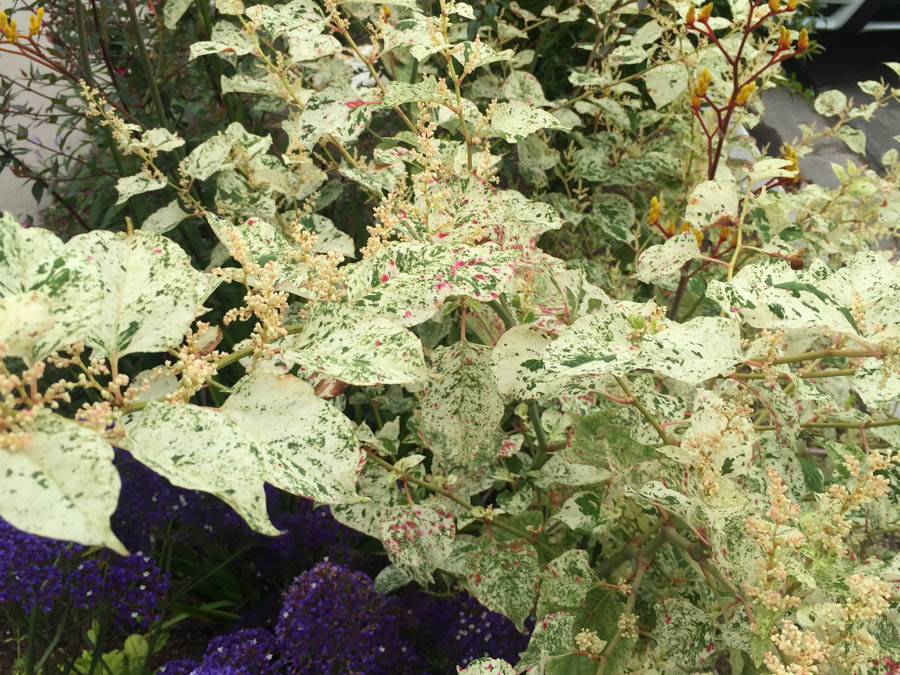
Looks like a painters drop cloth!

Small rocks and statues dot the front yard

Who thought up these patterns?
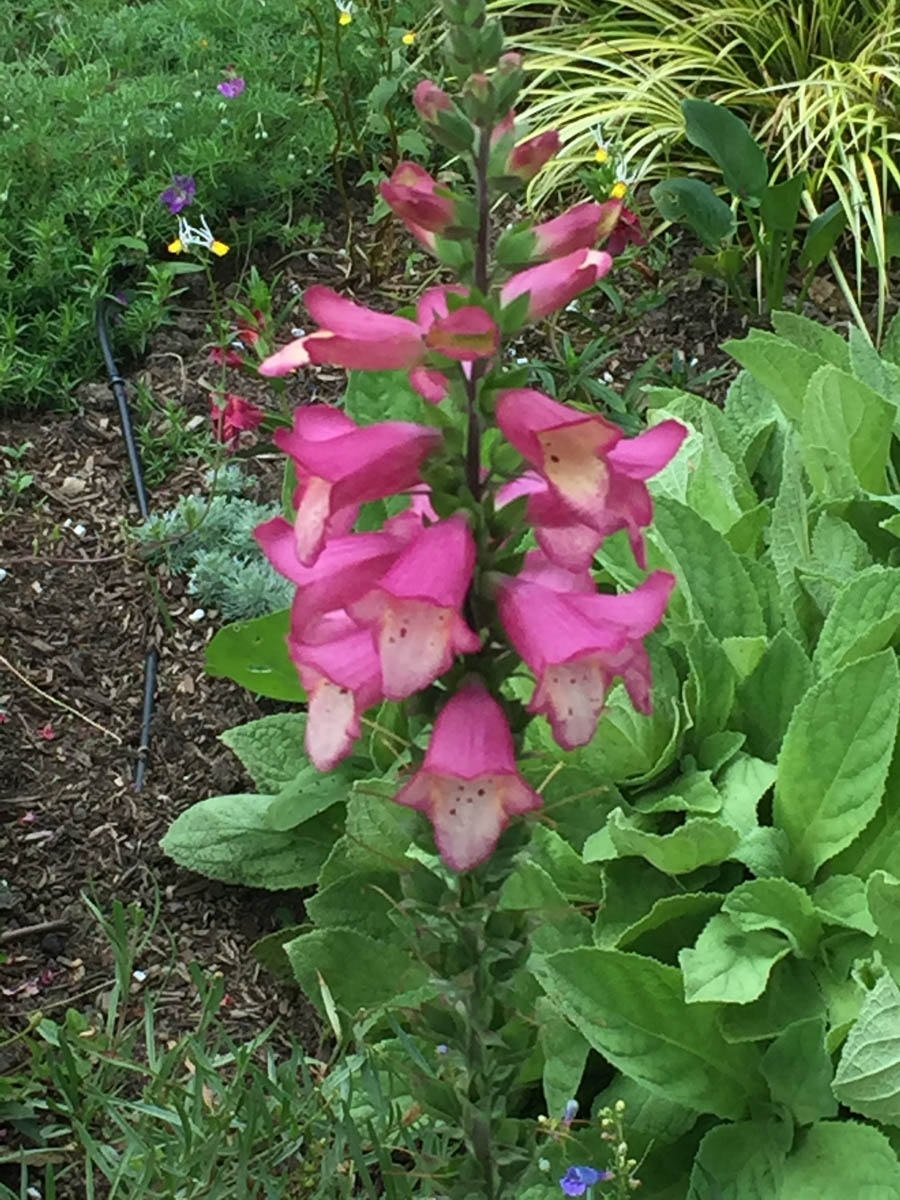
We are sure the Digitalis (Foxgloves) are talking...
Did You Know? - The name foxglove is formed of the elements fox and glove. The name is recorded in Old English as foxes glofe/glofa 'fox's glove', though there it does not refer to Digitalis. Although the elements of the name are transparent, their meaning is not. Because it is not clear why the flower should be called foxglove, other etymologies have been offered. Henry Fox Talbot (1847) proposed folks' glove, where folk means fairy.
A group of medicines extracted from foxglove plants are called digitalin. The use of D. purpurea extract containing cardiac glycosides for the treatment of heart conditions was first described in the English-speaking medical literature by William Withering, in 1785, which is considered the beginning of modern therapeutics.
It is used to increase cardiac contractility (it is a positive inotrope) and as an antiarrhythmic agent to control the heart rate, particularly in the irregular (and often fast) atrial fibrillation. Digitalis is hence often prescribed for patients in atrial fibrillation, especially if they have been diagnosed with congestive heart failure.

Listen carefully...
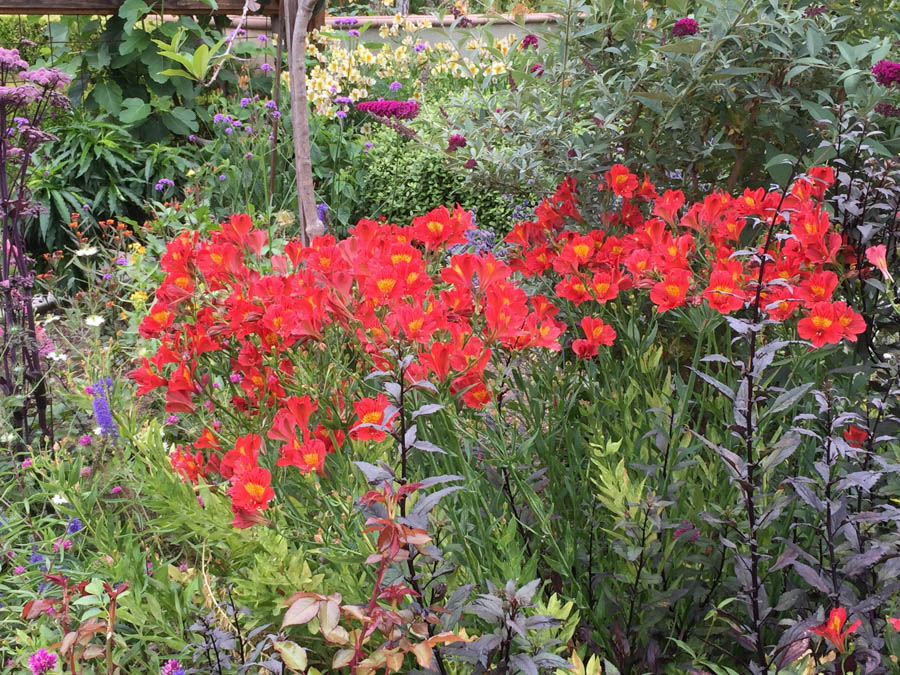
Fire Engine Red!
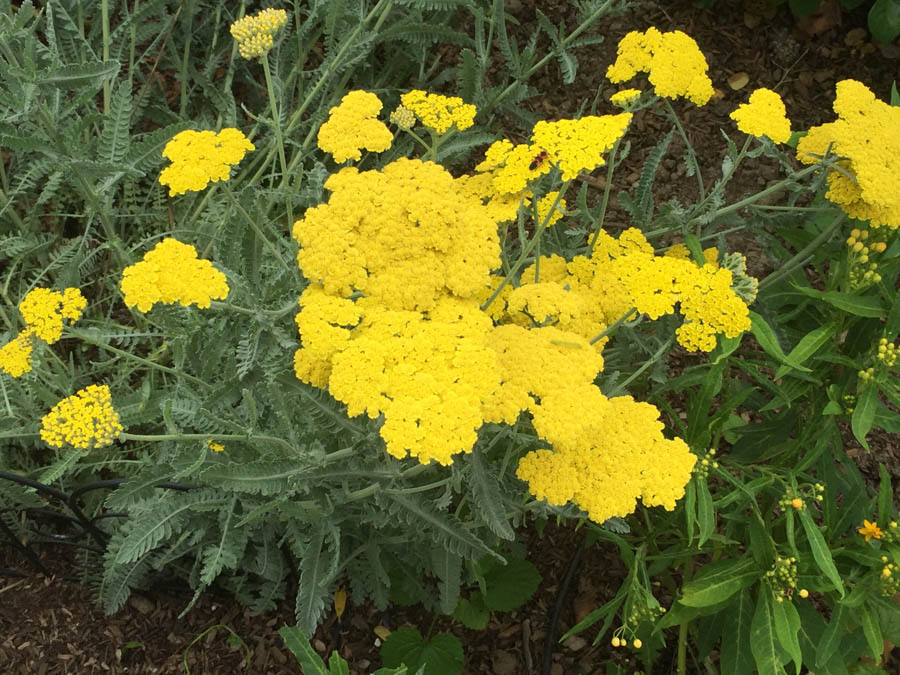
Very lacey.... Looks like it would make great mustard!

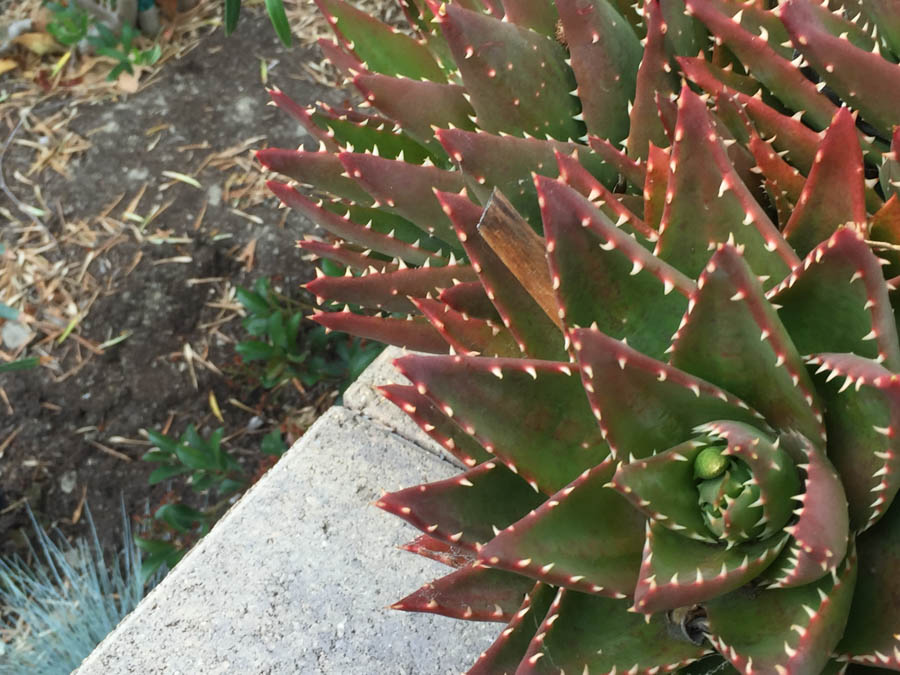
Alligator plant... Look at them teeth!

"P-s-s-s-s-s-t Mister... Put your finger over here!"
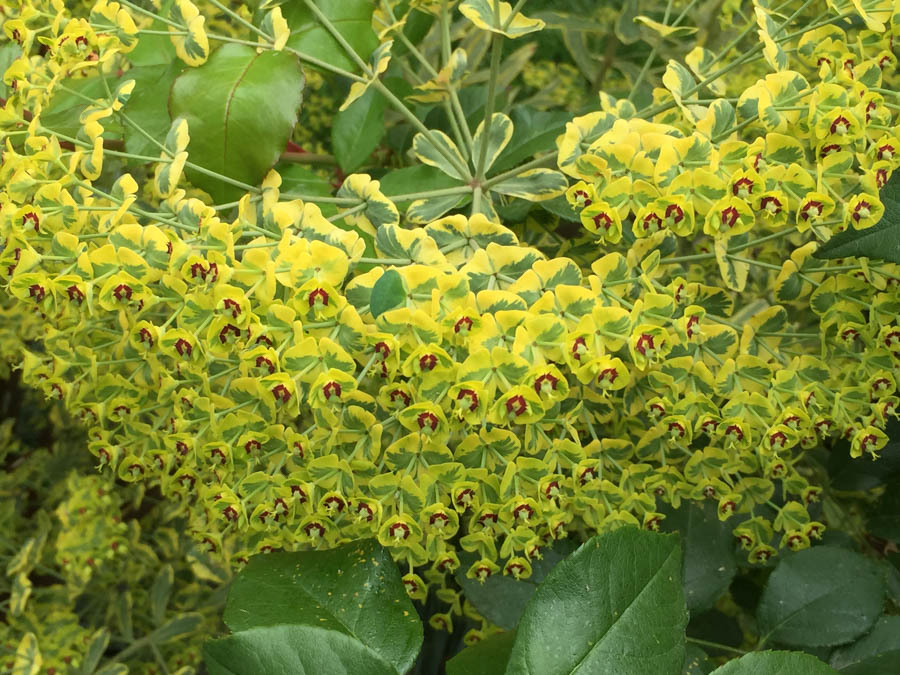
Mother Nature's designs are never the same
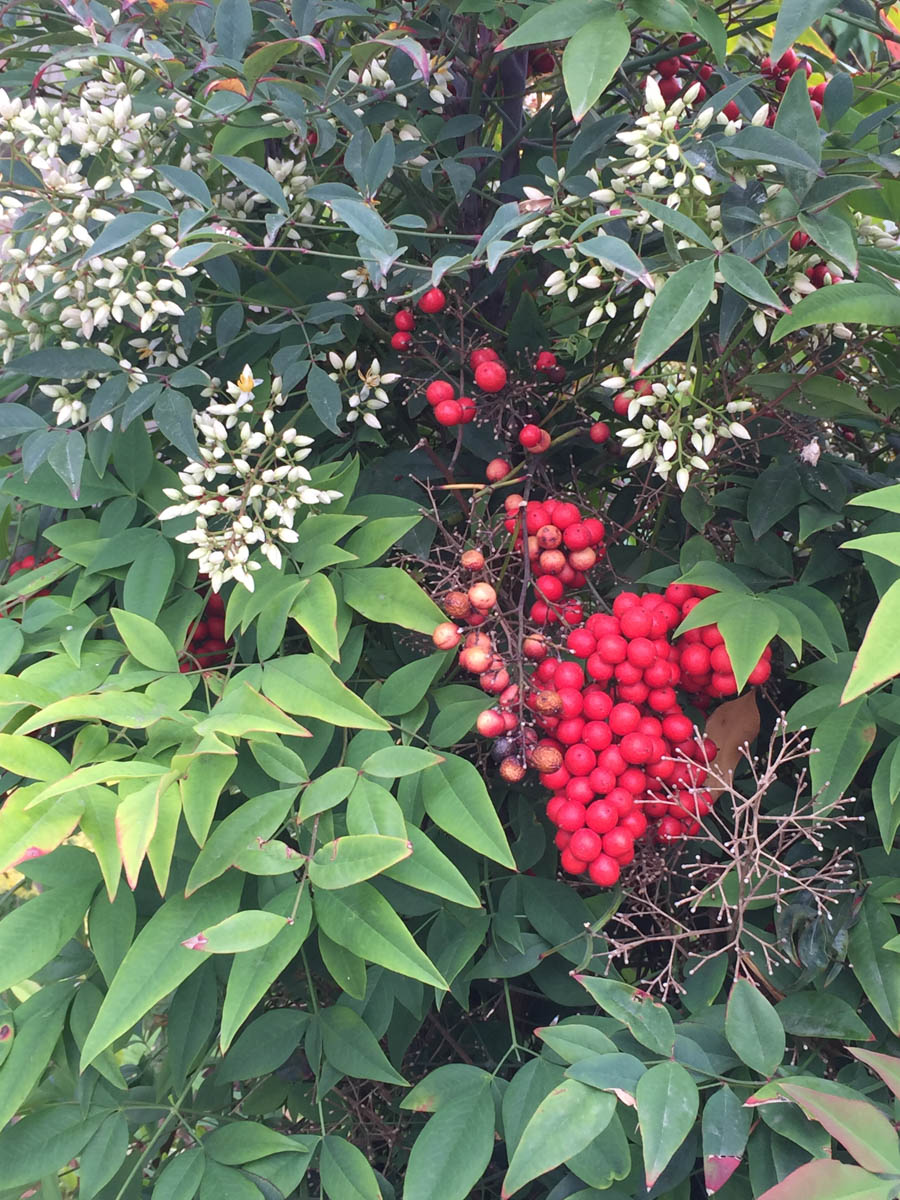
Berries all over
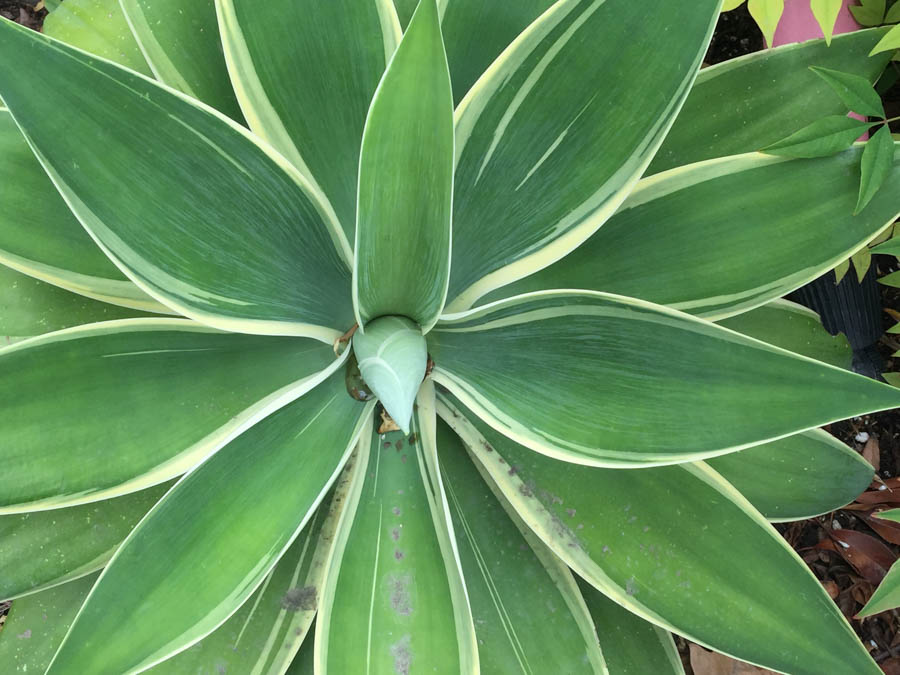
"I am a death ray.... No, just kidding... I be a cactus!

Walking May 10th 2016 (Top)
Off we go... we actually did an hour becasue we walked in the back yard for fifteen minutes looking at all the tomatoes and corn and squash making mental notes of what to be ready to cook when!


We did almost an hour

These little guys will become pumpkins if all goes correct!

Sue's fig is going Crazy... Figs all over the place!
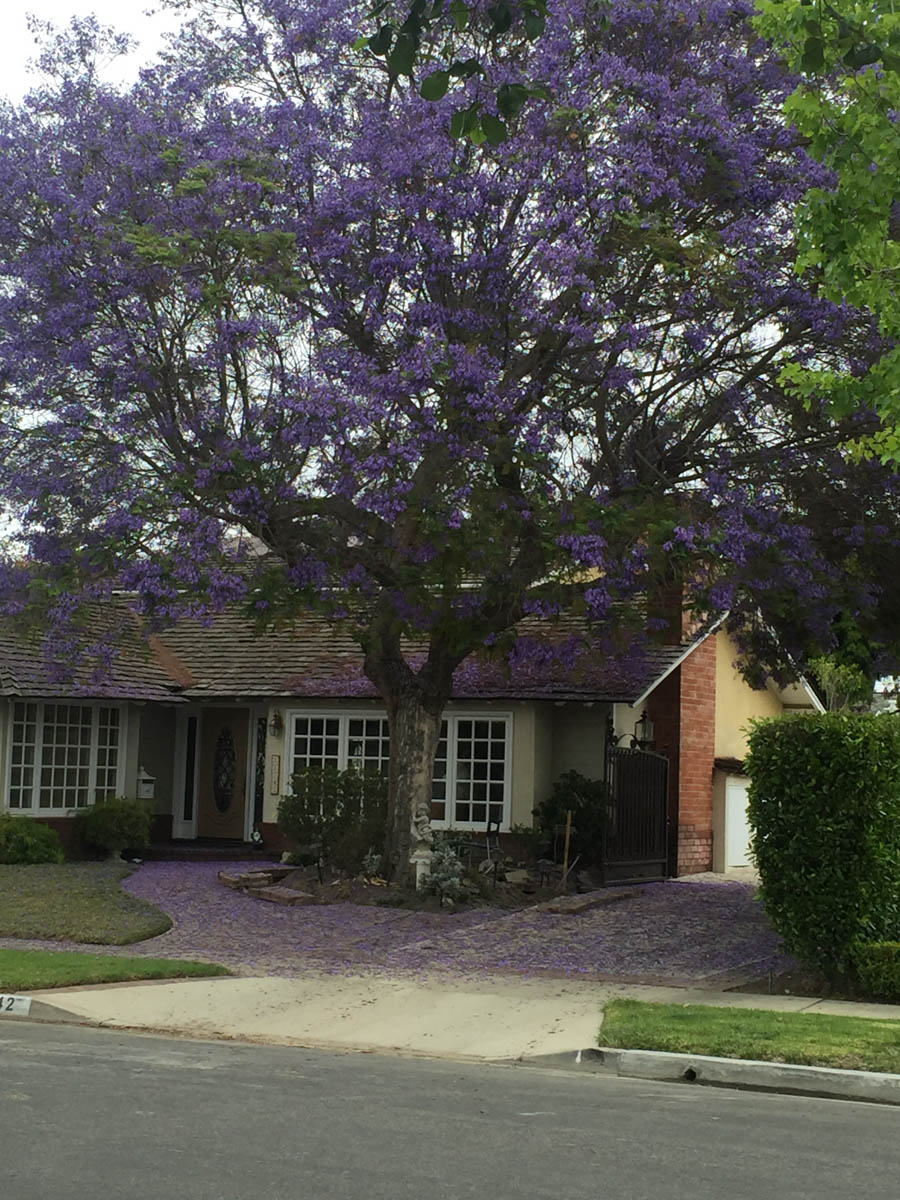
The Jacaranda's are in bloom all over the region
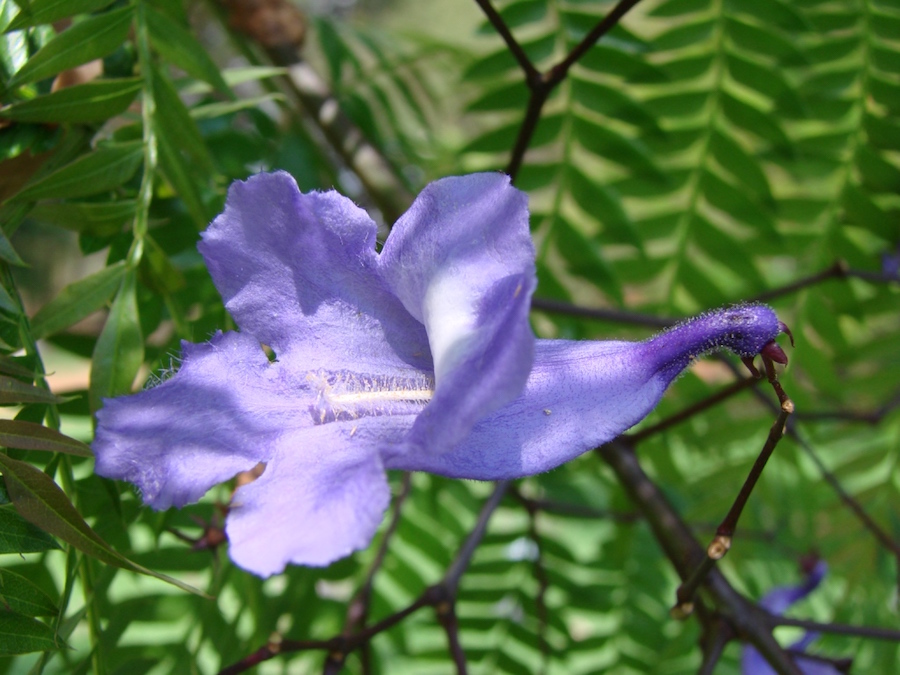
The flowers are pretty (but they are a bit messy when they fall)
Did You Know? - Jacaranda is a genus of 49 species of flowering plants in the family Bignoniaceae, native to tropical and subtropical regions of Central America, South America, Cuba, Hispaniola, Jamaica and the Bahamas. It has been planted widely in Asia, especially in Nepal. It is also quite common in South Africa, Zimbabwe and Australia. It has been introduced to most tropical and subtropical regions. The genus name is also used as the common name.
The name is believed to be of Guarani origin, meaning fragrant. The word jacaranda was described in A supplement to Mr. Chambers's Cyclopædia, 1st ed., (1753) as "a name given by some authors to the tree the wood of which is the log-wood, used in dyeing and in medicine" and as being of Tupi-Guarani origin, by way of Portuguese.

Great idea... We may stop by here again!
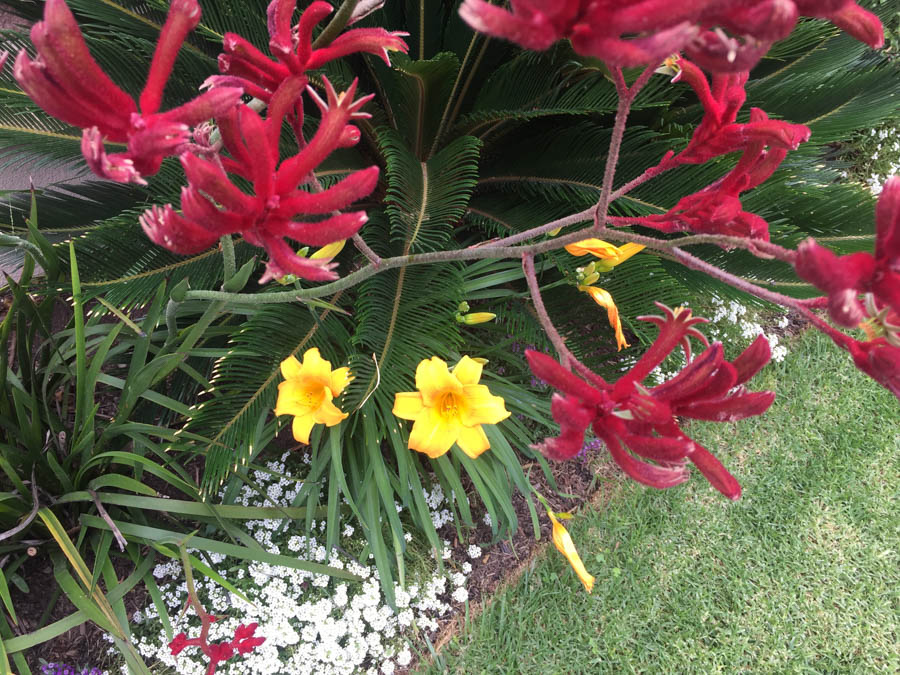
Reds and yellows... Looks like someone left a box of crayola's
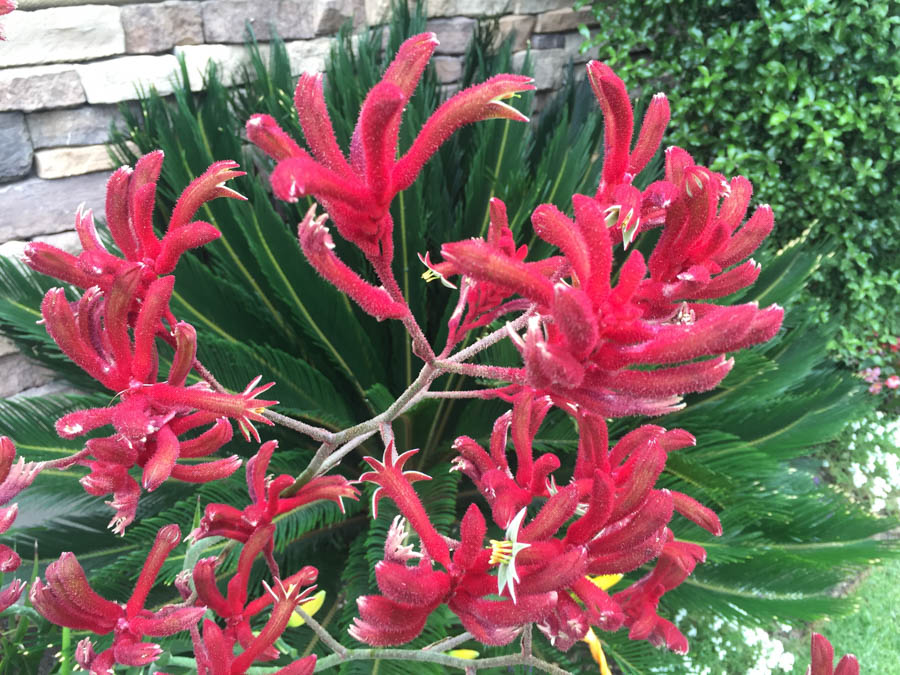
Kangaroo Paws seems to be all over the place
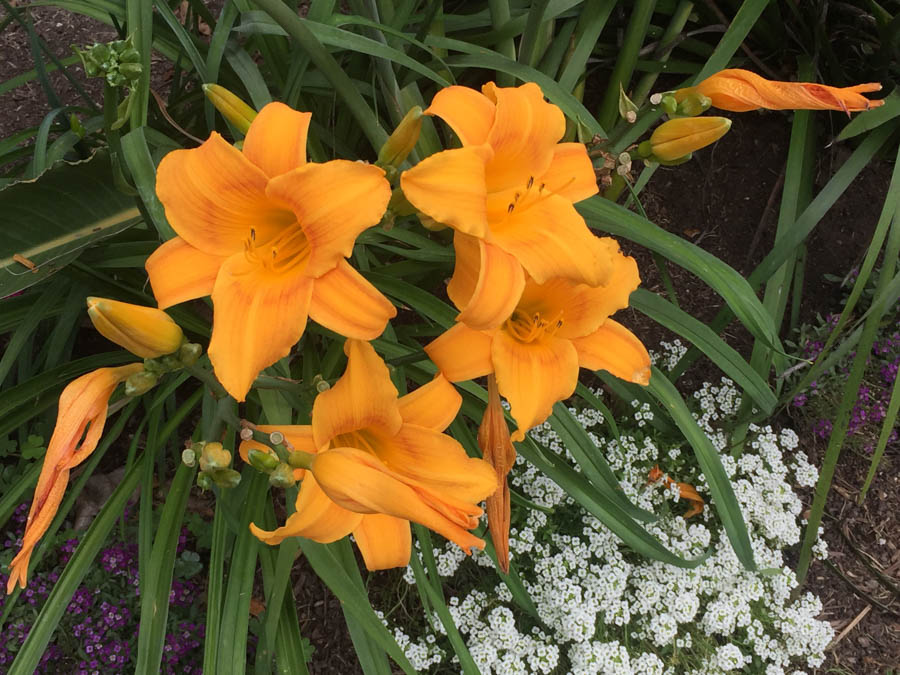
It's a content of oranges... Who wins... Lilly or Poppy's?

California Poppy right next door
Did You Know? -
Eschscholzia californica was the first named member of the genus Eschscholzia, named by the German botanist Adelbert von Chamisso after the Baltic German botanist Johann Friedrich von Eschscholtz, his friend and colleague on Otto von Kotzebue's scientific expedition to California and the greater Pacific in mid-1810s aboard the Russian ship Rurik.
The Antelope Valley California Poppy Reserve is located in northern Los Angeles County, California. At the peak of the blooming season, orange petals seem to cover all 1,745 acres (706 ha) of the reserve. Other prominent locations of California poppy meadows are in Bear Valley (California, Colusa County), Point Buchon and numerous other locations.
Its native habitat includes California, extending to Oregon, Washington, Nevada, Arizona, New Mexico, Sonora and northwest Baja California.

Antelope Valley California Poppy Reserve
Sue and Paul drove out to the reserve several years ago... Wow Wow Wow!
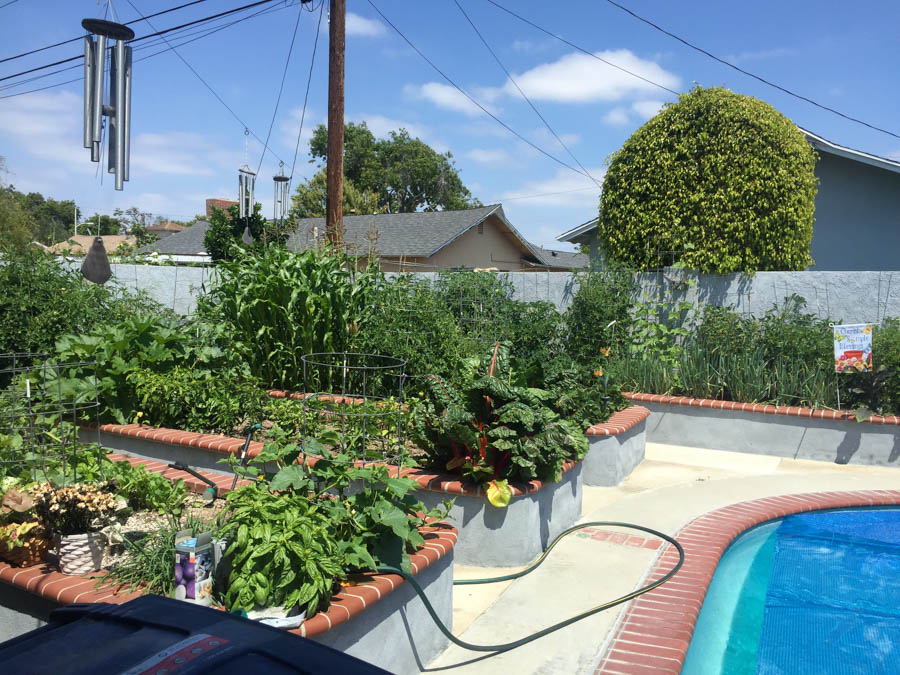
We returned to the backyard from wench we came
Exercise Quotations To Remember:
"I'm on a bit of a health kick, so I'll take the low-fat vanilla. With the following toppings: Snickles, Gooey Bears, Charlottesville Chew, Nice 'n Many, Kat Kit, Herschel Smooches, Mrs. Badbar, and Milk Dudes." -Homer Simpson
I really don't think I need buns of steel. I'd be happy with buns of cinnamon. -Ellen DeGeneres
My idea of exercise is a good brisk sit. -Phyllis Diller
Whenever I feel like exercise, I lie down until the feeling passes. -Robert M. Hutchins
Exercise... the poor person's plastic surgery
-Unknown
Walking May 16th 2016 (Top)
We are back from Catalina and the Avalon Ball and ready to walk!


We did an hour starting in the back yard!

The pumpkins are doing just fine

Great blossoms
Pumpkin Anatomy:
Pumpkins have been examined, studied, and literally dissected more than any other object. Aside from frogs in Biology class, we can't think of any other item that has been more thoroughly examined in the classroom, or at home:
Stem - Often referred to as the pumpkin's "Handle". Located on the very top of the pumpkin, the stem is green, when the pumpkin is still growing. As the fruit ripens, it turns brown to brownish green, and slightly curved. During the growing season, the stem is attached to the vine. It is the umbilical cord, bringing nutrients to grow the fruit. For the Fall and Halloween season, the stem gives the pumpkin "Character". Be careful not to lift a pumpkin by its "handle", as it can easily break off.
Tendril - Sometimes attached to the stem are thin, hairlike "tendrils" During the growing season, a pumpkin's tendrils on the vine are green. They twist around fences, posts, other plants, and objects on the ground, to help anchor the vine and protect it from the wind. After harvesting, there are sometimes dried, brown tendrils on the stem. This gives the pumpkin character, and is viewed as artistic in pictures.
Leaves - The leaves of a pumpkin absorb energy from the sun for plant and fruit growth. Jack O'Lanterns for carving do not have any leaves, just a short stem. Artist's rendering of fall pumpkins often have a few small, green leaves sitting atop the fruit and attached to the stem. Pumpkin leaves are much larger than depicted in these artistic pictures. And, the stem doesn't have leaves. The vine does(further away from the stem). Once a leaf is removed from the vine, those green leaves can not remain fresh and green for long.
The Lid - Cut around the stem of your pumpkin, to open it up for carving. This becomes the "lid".
Pumpkin Shell - This refers to both the outer skin and the pulp of the fruit.
Skin - The thin, shiny, orange outer layer of a pumpkin is called the skin. It is sometimes called the "rind". It is a protective layer, which keep insects and disease out of the fruit. It is not edible. It won't make you sick if you eat it. It just doesn't taste good, or have a pleasurable texture.
Pulp - Also called "meat". This is the yummy part of the pumpkin that you use to cook with, and to make hundreds of tasty recipes and treats. You can use pumpkin in everything from main courses to desserts, ice cream and even beer!
Ribs - Look at the outside of a pumpkin. There are indented ridges running from top to bottom. These are called ribs. Sometimes, they are shallow. Sometimes, they are very deep. They add depth to the appearance of the fruit, and a lot of artistic character. Which do you prefer?
Blossom End - When the fruit is very young, a flower blossom is attached to the end of the baby fruit (its bottom). This is the blossom end. The female flower is pollinated, and the fruit then develops. The flower dies, off, leaving a scar in its place. Some call this the pumpkin's belly button.
Cavity - This is the inside of a pumpkin. After removing the pumpkin guts, its just an empty cavity. It is also where the candle is placed, to light up the pumpkin and make it glow!
Brains - Okay, the proper name is fibrous strands and seeds. However, just about everyone calls them " pumpkin brains". There are many other names for this slimy, mushy, mass of strings and seeds. They include: guts, sinew, goop, goo, pumpkin slime, and just plain old "yucky stuff".
Seeds - Seeds are the beginning of next years pumpkins. Do you remember the old saying "Which came first? The pumpkin or the seed?" Pumpkin seeds are a delicious and nutritious snack. A pumpkin has hundreds of seeds.
Seed Coat - also called "seed jacket" or "seed shell". It is the outer layer of the seed. Nature provides this coat, to protect the nut or "seed germ" inside, that will eventually emerge into a pumpkin plant.
Nut - Located inside of the seed, the nut, technically called "germ" eventually develops into a new pumpkin. When a seed is planted, moisture penetrating through the seed coat, and warmth triggers the new pumpkin seedling to grow.

If each one becomes a pumpkin we are in trouble

A future pumpkin

Time to pick some apples

It's loaded for its first year!

"I am watching you!"

The ears are starting to form
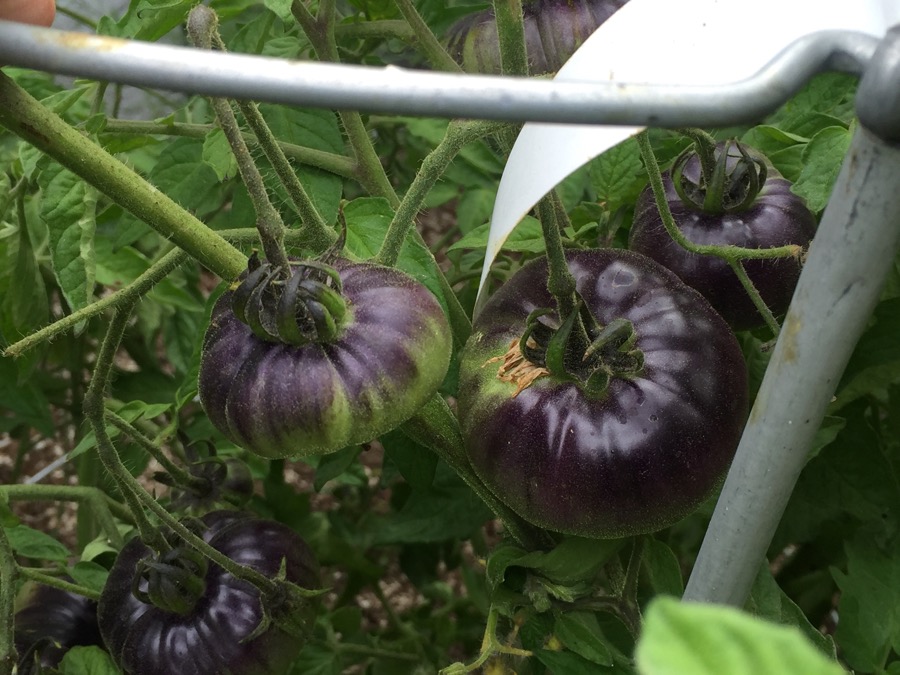
Beauties.... They will be in our food in short order

The squash are forming nicely
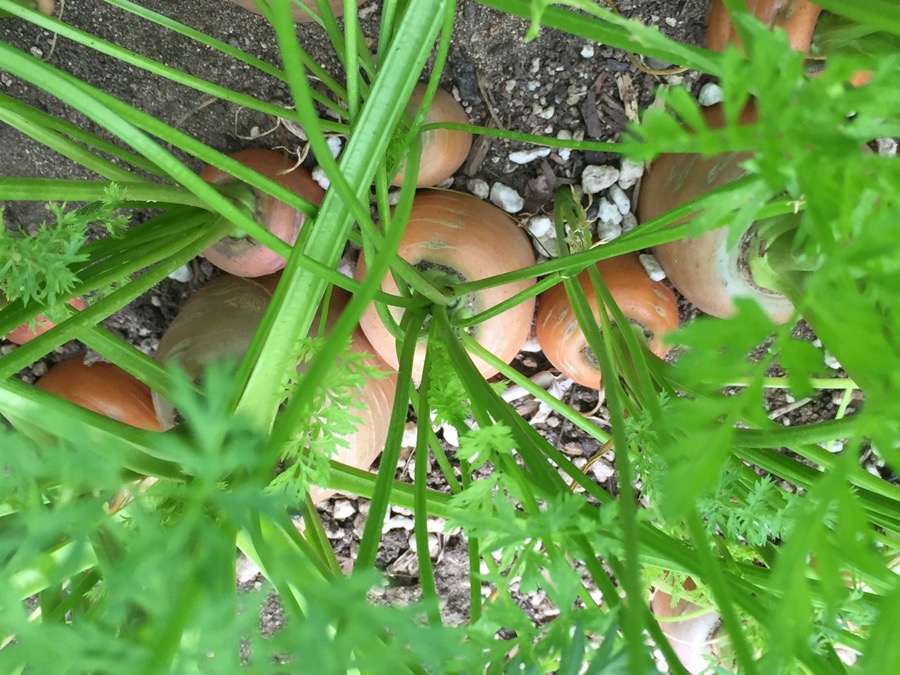
Birds eye view of the carrots

Baby cucumbers

Awe... So cute
Walking (In Ralph's Market) May 31st 2016 (Top)
We decide to go to the market as we have shopped in several days. Paul turns on the GPS unit and voila, magic! We walked 35 minutes but the path was difficult to tell... It's all inside the local Vons Market.


Look pretty funny
Walking May 31st 2016 (Part Two - The "Real" Walk (Top)
After the market is was time for a real walk!



TIme for a date?

The paint was very think... MAny layers over many years built up!

Such bright colors
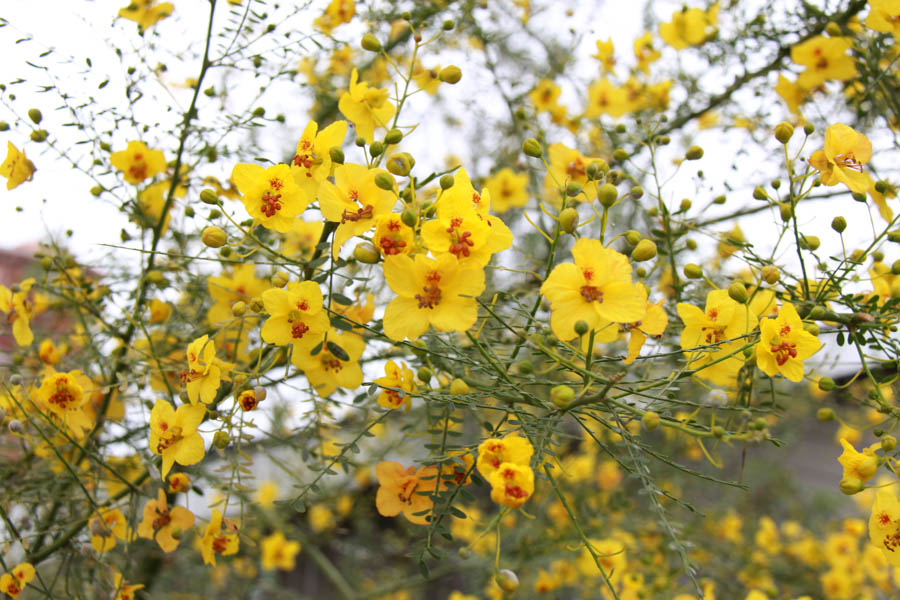
They looked good enough to eat

Mexican Poppies
Did You Know? - Hunnemannia is a monotypic genus of flowering plants in the poppy family Papaveraceae, containing the single species Hunnemannia fumariifolia (tulip poppy or Mexican tulip poppy) native to the highlands of Mexico. It is typically found at elevations of 1,500–2,000 m (4,921–6,562 ft) in the Chihuahuan Desert and south into central Mexico, where it favors rocky habitats, occurring along roadsides as well.
It is a perennial whose erect stems are somewhat woody at the base, and may reach 60 cm (24 in) in height. The leaves resemble those of the closely related Eschscholzia, being finely divided into many gray-green linear lobes. The flowers are solitary yellow cups formed from four overlapping petals, 5-7 cm across, vaguely resembling the unrelated tulip; the two sepals underneath typically fall away as the flower opens. The numerous stamens are short, with orange anthers.
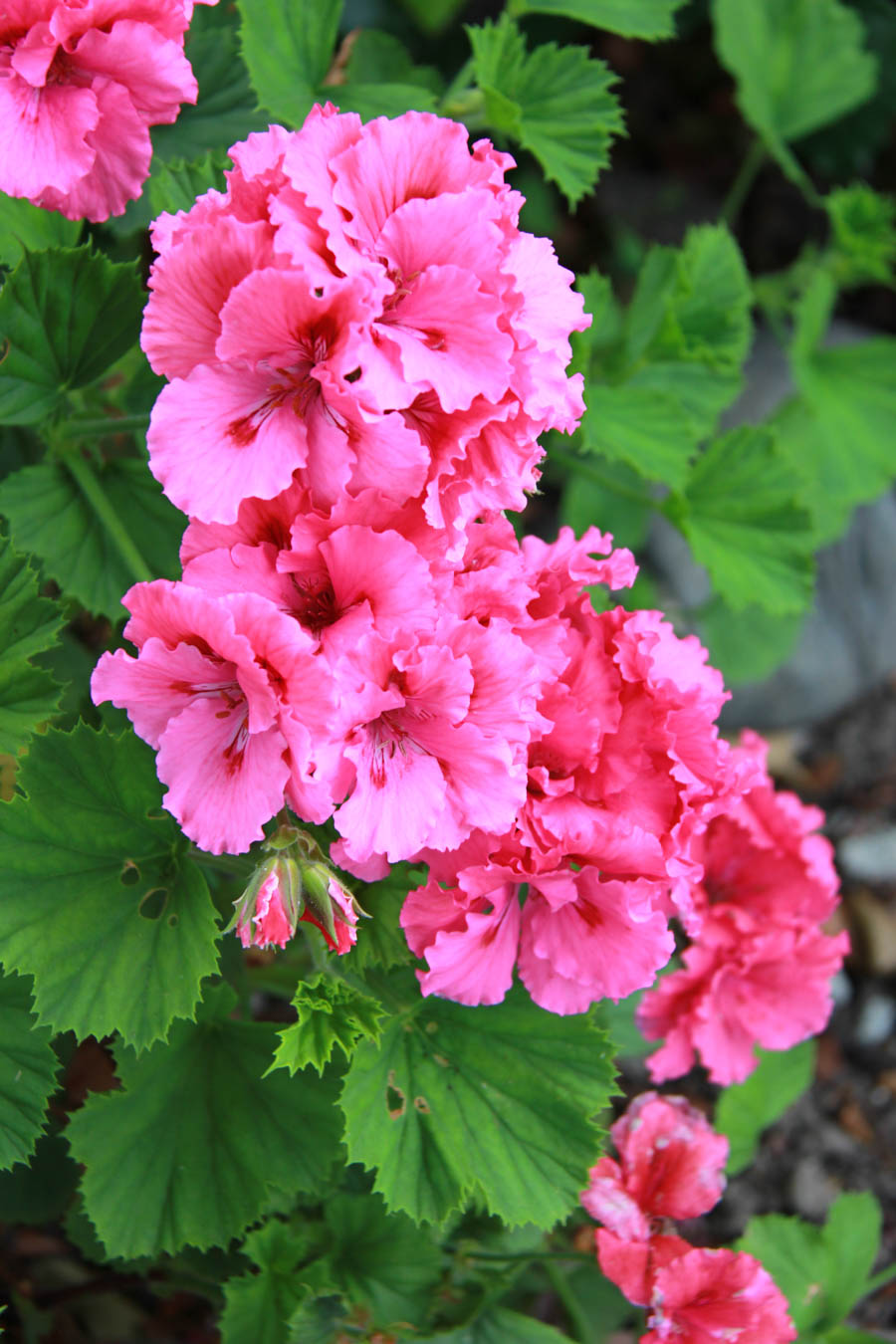
Did I say bright... We looked for the electric cord!

Love to see these signs!

Not for the dinner table that's for sure

Oink Oink! Every heard of a "White Pig Sale?"

The Yellow Rose Of Texas

Just simplu beautiful

Looks like they are smiling!
Did You Know? - The name "pansy" is derived from the French word pensée, "thought", and was imported into Late Middle English as a name of Viola in the mid-15th century, as the flower was regarded as a symbol of remembrance. The name "love in idleness" was meant to imply the image of a lover who has little or no other employment than to think of his beloved.
The name "heart's-ease" came from St. Euphrasia, whose name in Greek signifies cheerfulness of mind. The woman, who refused marriage and took the veil, was considered a pattern of humility, hence the name "humble violet" .
In the early years of the 19th century, Lady Mary Elizabeth Bennet (1785–1861), daughter of the Earl of Tankerville, collected and cultivated every sort of Viola tricolor (commonly, heartsease) she could procure in her father's garden at Walton-upon-Thames, Surrey. Under the supervision of her gardener, William Richardson, a large variety of plants was produced via cross-breeding. In 1812, she introduced her pansies to the horticultural world, and, in 1813, Mr. Lee, a well-known florist and nurseryman, further cultivated the flower. Other nurserymen followed Lee's example, and the pansy became a favorite among the public.

Hibiscus blossoms are always a favorite

Roses seem to come in any shade

My thought for the May walk!